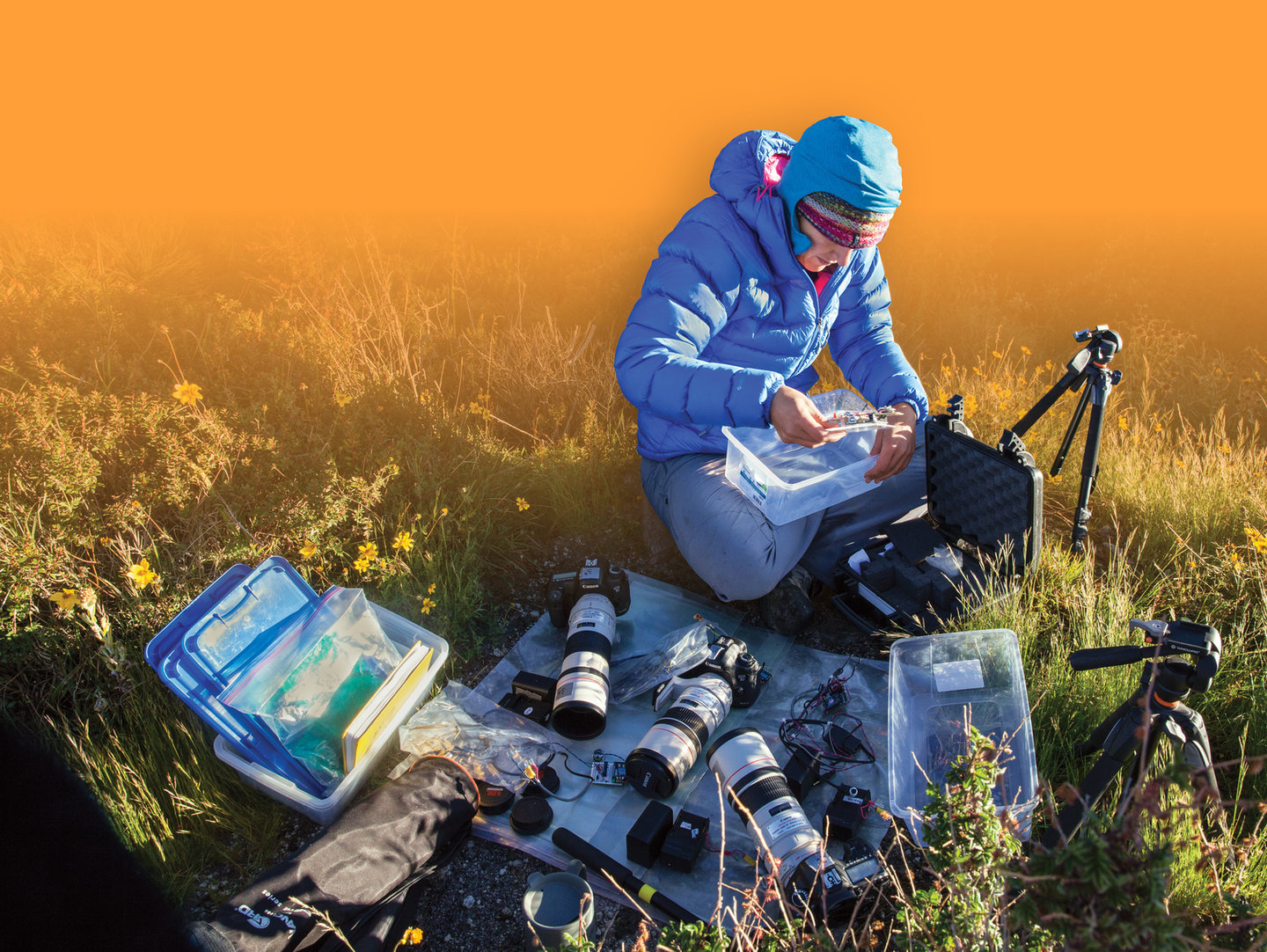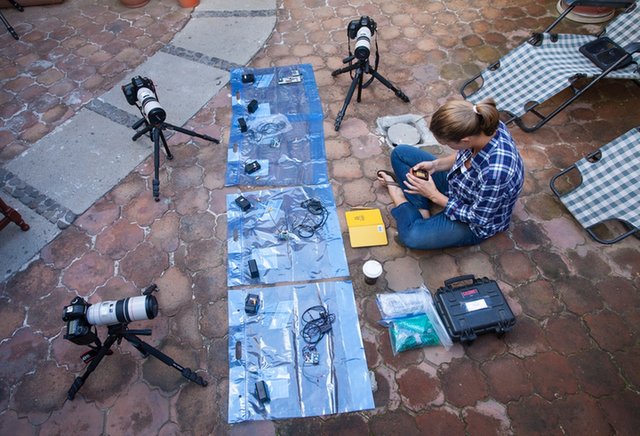IntheField
Onceinthefield,theteamgottowork.Afirstprioritywastosetupcamerasinaspecialway,sothattheycouldtaketime‑lapsephotosofthe vent.
Threecameraswereeachriggedwitharadioreceiver.Thecameraswouldbetriggeredremotelyusingatransmitter,and photographswouldbetakensimultaneouslyfromthreeseparatevantage points.
Togetthecamerastowork,theyneededtobecloseenoughtoeachothertopickupthesignalsfromeachlocation.Theyalsoneededtobeaimedatthesame point.
Usingradiostocommunicatewitheachother,theteamangledthecamerasintopositionfromtheirseparatelocations.Theytooktestshotstomakesurethecameraswereallfunctioning.Then,theyweighedthecamerasdownwithrockstoholdtheminplaceontheirtripods.Ittooknearlythreehoursfortheteammemberstopositionthe cameras.
Grockeinspectsthecamerasandothergearbeforepositioningthemaroundthelava dome.

RoutineMaintenance
Focusedontheactivevent,thecamerasweresettotakeonepictureeveryfivesecondsduringtheday.Theywouldtakeonepictureeveryminuteatnight.Theteamwouldtrytotakepicturesfor36 hoursstraighttotrytocaptureasmuchactivityas possible.

Thesethreecameraswillbeconnectedusingradiotransmittersandreceivers,sothattheycantakephotosofthelavadomeatthesametimefromthreedifferent places.
Settingthecamerasupwaschallenging.Butsowaschangingthecamerabatterieseveryeighthours!Thiswasespeciallydifficulttodointhemiddleofthenightwithoutdisturbingthecameras.Armedwithheadlampsandhikingpoles,eachteammemberscooteddownthemountainontheirbacksidestoreacheachcamera.Notthemostdignifiedwaytogodownamountainperhaps,butarguablythesafestonawindynightinthepitch dark!
Whentheyweren’tmanningcameras,Grockewastakingnotesofherobservations;Salazartookthousandsofphotographs;andDonihuetookGPSreadingsandusedadronetocollectdataandaerial photographs.